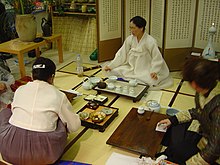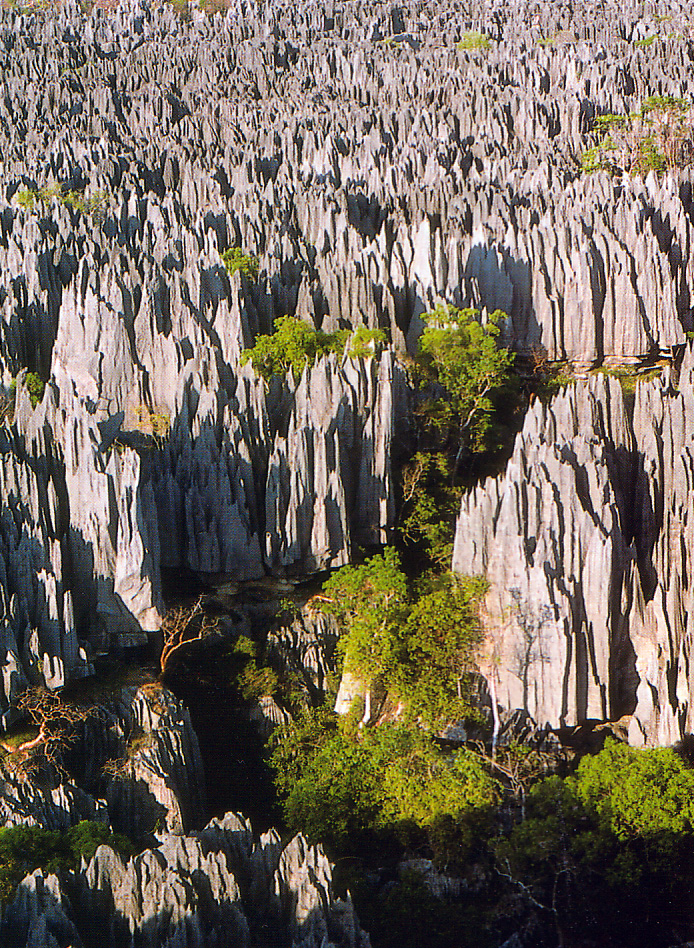We've now been living in South Korea for about 4 months. We’re coping OK with the weather but so far but we’ve only had a few days of very cold weather. I chatted with someone from Siberia recently who told me she actually prefers winters in Siberia because there’s less wind there ... (I told her they must be sending it all over here to SK). Of course we’ve had to buy everything from scratch (coats, gloves, scarves, footwear, hats etc) as we never needed them in Reunion.
 |
| Seoul by night, from our flat |
Language-wise we've both been having Korean lessons, but my (French) husband in French and me in English. We’re both only at the “What is this ? This is a pen” stage. We know how to read the alphabet but when you decipher a word you don’t necessarily know what it means as most vocabulary is completely different to English, although you can sometimes use your imagination – the Korean words for ‘glass’ and ‘door’ put together mean ‘window’. ‘Han-deupon’ is a cellphone (‘handphone’) for example. So day-to-day activity is carried out in basic English and/or basic Korean and/or sign language. I’m actually worried that next time I’m back in the UK I’ll be speaking pidgin English to everyone ! V. managed to have his hair cut at a hairdresser’s where they don’t speak a word of English. Women being fussier about haircuts, I went to one where I knew they spoke some English.
 |
| not as complicated as it looks actually (image from www.hapkidoselfdefense.com) |
I’ve managed to take the bus a couple of times as well – not as simple as it sounds because unlike the subway system it’s not very non-Korean speaker friendly. Also the bus drivers, like the taxi drivers, tend to have a whiplash-inducing style of driving. I’ve actually seen a woman standing in a bus fall over because the driver braked so hard ... V. got his Korean driving license too, be interesting to see the reaction of a French or British policeman if he has to show it if he gets stopped. He needed the Korean driving license (I’ve got an international one) for when we hired a car and did our road trip round the peninsula at the end of October. It was interesting to get out of Seoul, to see that are lots of tower blocks everywhere (just like Seoul) but also a lot less English spoken and less foreigners – although in Seoul there aren’t that many foreigners really. So when we were sight-seeing if our paths crossed that of a bunch of school children they’d all be shouting “hello, how are you” 60 times to us ! Anyway around the country there are some remarkable and less remarkable sights, you realise how old the country’s history is, but also how much it has suffered from repeated foreign invasions.
Other interesting experiences were V. tasting silk-worm pupa (a great delicacy here) and having a violent allergic reaction to them. He’s not an allergic person and often ate wasp larvae in Reunion so we were surprised. I can just imagine him seeing a European doctor for the first time who asks him if he’s allergic to anything “Oh yes, just silk worm larva ...”.
Also on the health front I found out that only 0.5% of Koreans have my blood group (A-), the same goes for all negative blood groups (in Europe its about 6% per negative blood group) , so basically if you’re Rhesus negative and you ever need a lot of blood you’re unlikely to get it here. So if you were wondering what to send me for Christmas now you know – some A- blood !
 |
| silk worm larva, known as beondegi in Korean |
Also on the health front I found out that only 0.5% of Koreans have my blood group (A-), the same goes for all negative blood groups (in Europe its about 6% per negative blood group) , so basically if you’re Rhesus negative and you ever need a lot of blood you’re unlikely to get it here. So if you were wondering what to send me for Christmas now you know – some A- blood !
In October during one of my Korean tea ceremony classes we heard a very loud siren going off everywhere. Apparently every so often there are drills in case of an attack by North Korea. In fact an armistice was never signed at the end of the Korean war, there was just a ceasefire. I’d like to go on a trip to North Korea, but about 2 weeks ago they tightened security and it’s currently not possible.
 |
| Korean tea ceremony (photo Wikiepdia) |
We did a temple stay last month. A group of us went on an organised trip to a Buddhist temple in Ganghwado – I wanted to go not so much for the religious side of things but cultural as Buddhism and Buddhist thinking is an important part of life here even though Korea is the most Christian country in this part of Asia. So we participated in meditation, chanting, ‘work’ (chrysanthemum flower picking) and calligraphy.
 |
| calligraphy |
 |
| tea with the head monk |
 |
| during a service |
This being Asia everything takes place sitting on the floor, including eating meals (you sleep on the floor too). But the ‘high’ point was getting up at 3:45am to do 108 salutations at 4am in the temple during morning service ...! A monk who misses morning service would have to do 3000 salutations to make up for it; apparently this takes about 8 hours.
Less spiritual was the visit I made to the world’s one and only toilet shaped house built by a Korean to raise awareness of all the people without toilets. It really is a lived-in house (see my picture below).
I also recently visited the House of Sharing and museum for former “comfort women” from WWII – not an easy visit, but eye-opening all the same.
Suggested reading :
Comfort Woman by Nora Okja Keller
by Nora Okja Keller
Suggested reading :
Comfort Woman

















































